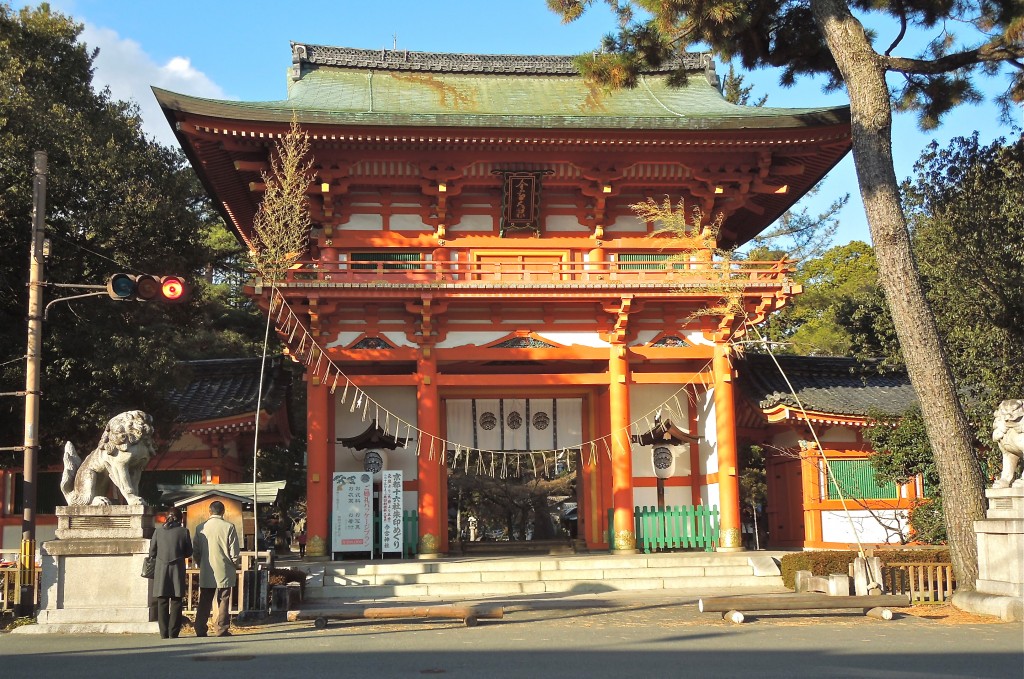
The splendid romon gate entrance of Imamiya Jinja in Kyoto
This is Part 3 of a series extracted from the Introduction to Shinto Shrines by Joseph Cali and John Dougill. The following is a list of the main physical items that are found at a shrine and its environs.
************************************************************************************
Torii: A torii marks a place as sacred. The origins of the torii are obscure, but a type of torii is mentioned in the Kojiki (712) as a bird perch in the story of the Heavenly Rock Cave. The Chinese characters used for torii have this meaning of “bird perch.” There are a number of styles and materials, but whatever the type the torii is the clearest indication of the existence of a jinja.
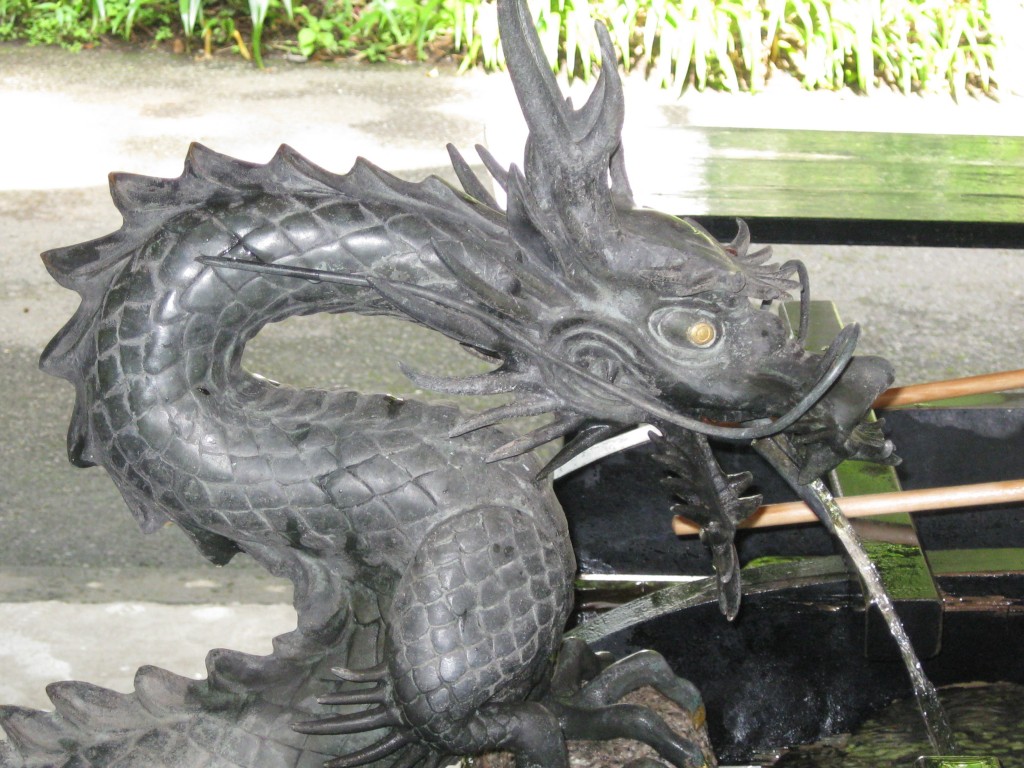
Typical dragon spout at a shrine water basin
Sando: The path that leads to the main shrine and through the shrine grounds, usually beginning from the first torii.
Temizuya: A water font and basin placed somewhere to the front of the shrine building, used to perform ritual ablution in the form of cleaning the hands and rinsing the mouth. Usually composed of a stone basin, a font—often in the shape of a dragon (a water deity)—dippers to extract the water, and a roof covering the basin.
Romon: This is a two-story, roofed gate in front of the main shrine that acts as a formal entrance to the area. The style was originally used for Buddhist temples, but it became common at shrines, especially at the larger ones. Though it seems to be two stories in height, it is actually a single-story structure, usually with a shallow balcony surrounding the structure where the second floor would be. It has a hip-and-gable roof covered in cedar bark, copper or ceramic tile. In Buddhist temples, fierce-looking guardian deities (nio) stand in the boxes. In Shinto shrines, the lower half of the box acts as a stand for the figures, which are usually seated archers in Heian dress called zuijin (such gates are also called zuijinmon).
Honden: The primary shrine building is called the honden (main hall or sanctuary), which is where the sacred object of worship (goshintai) is housed. It is the most sacred space within the shrine because it is where the kami resides or descends. The interior varies in layout depending on the style, but it always contains an inner sanctuary (naijin) that is the kami seat (shinza), and an outer sanctuary (gejin). The naijin is never open to entry or viewing other than by the chief priest or on special occasions (such as when a building is to be renewed and the goshintai has been removed). The honden is usually surrounded by a sacred fence (tamagaki), the area within which is considered purified ground and usually covered with white gravel.
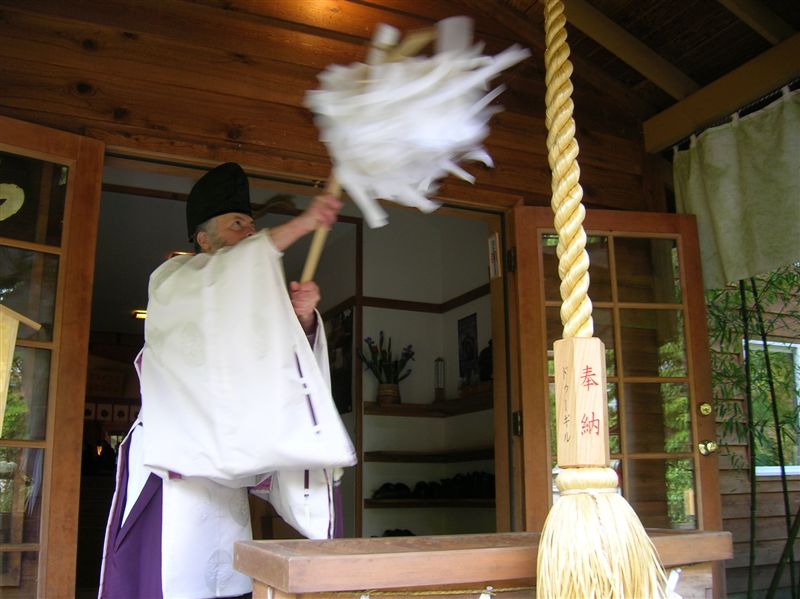
Bell rope and offertory box at the Tsubaki Grand Shrine of America
Goshintai: The goshintai (or just shintai: go is an honorific) is an object of veneration contained within every shrine. It is an object into which the kami has descended, or into which it is invited. The shintai is contained within the honden and is never seen by anyone other than the chief priest of the shrine (guji). In some cases, it has not been seen by anyone for hundreds of years and even the chief priest does not know for sure what it is. It is known from records of enshrinements that the shintai can be either man-made or natural, and examples include mirrors, magatama (beads), swords, paintings, stones, and sculptures.
Haiden: The hall of worship or oratory, which is often the building that is most prominent when entering the shrine grounds. It stands immediately in front of the honden and is usually larger—thereby obscuring the view. The building is used for ceremonies and worship of the shrine’s kami. It is also the place where visitors engage in rituals in conjunction with a priest. The haiden may be connected to the honden behind it by a covered corridor or offering hall (see below).
Heiden: A structure for making offerings, placed between the honden and haiden. In some cases, the heiden is an independent building, and in others it is only a connecting corridor. For the most part, it is used for the performance of rituals, sometimes of a higher order than those conducted at the haiden.
Saisenbako: An offering box with a screened top, into which worshippers toss money. The box stands at the entrance to the haiden (hall of worship), or directly in front of the honden if no haiden exists. It is the first thing the worshipper attends to before prayer. Donation amounts are not fixed and are usually a few coins ranging from one to ten dollars (¥100 to ¥1,000).
Waniguchi or suzu: Types of bell attached to a thick rope and hung directly over the offering box. The worshipper shakes the rope to ring the bell after money has been deposited in the offering box. The purpose is to call the attention of the kami before offering a prayer. The waniguchi style of bell often has a slit along the bottom and so resembles an alligator’s mouth (wani means alligator). It may have originated at shugendo mountain temples.
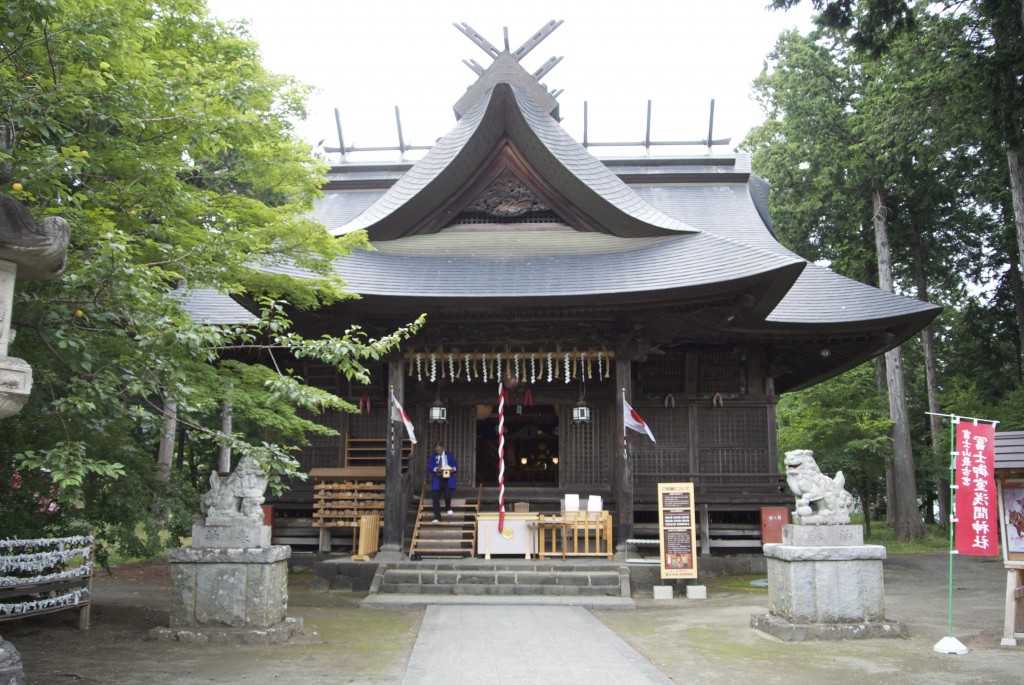
Bell ropes, offertory box, and open doors indicate this is a Worship Hall (haiden). The honden where the kami resides is smaller, on a higher level and at the back of the building.
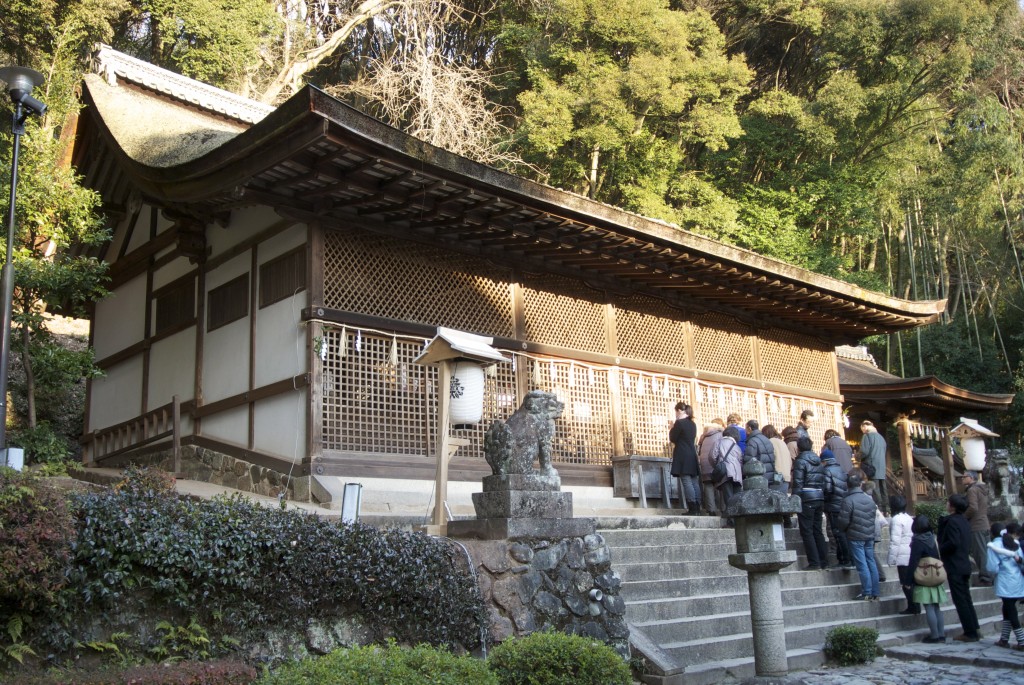
Ujigami Jinja outside Kyoto has the oldest standing honden in the whole of Japan, dating back to around 1060 and a World Heritage Site
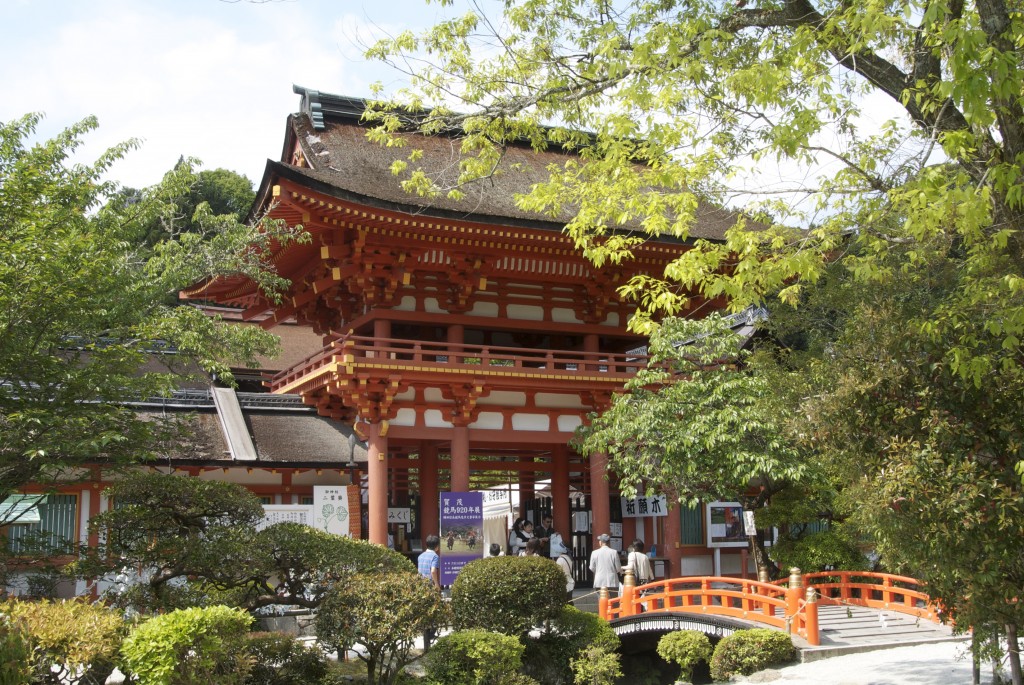
The romon at Kamigamo Jinja, also part of a World Heritage complex
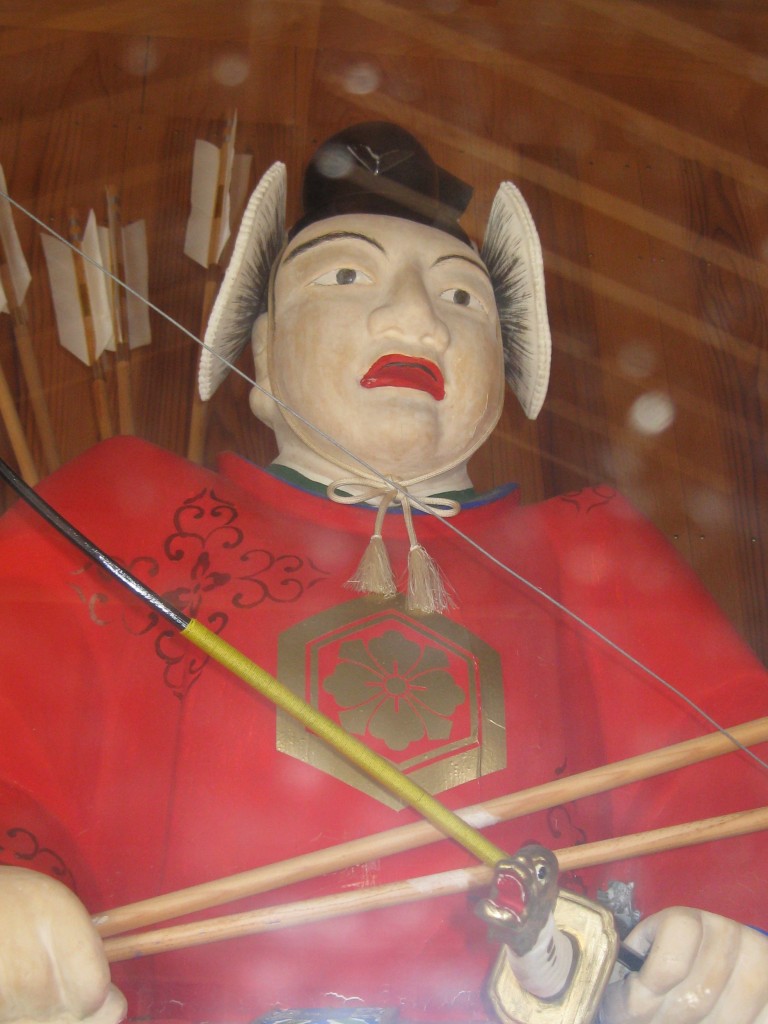
A zuijin guardian who sits in the bottom part of the romon gate

Leave a Reply